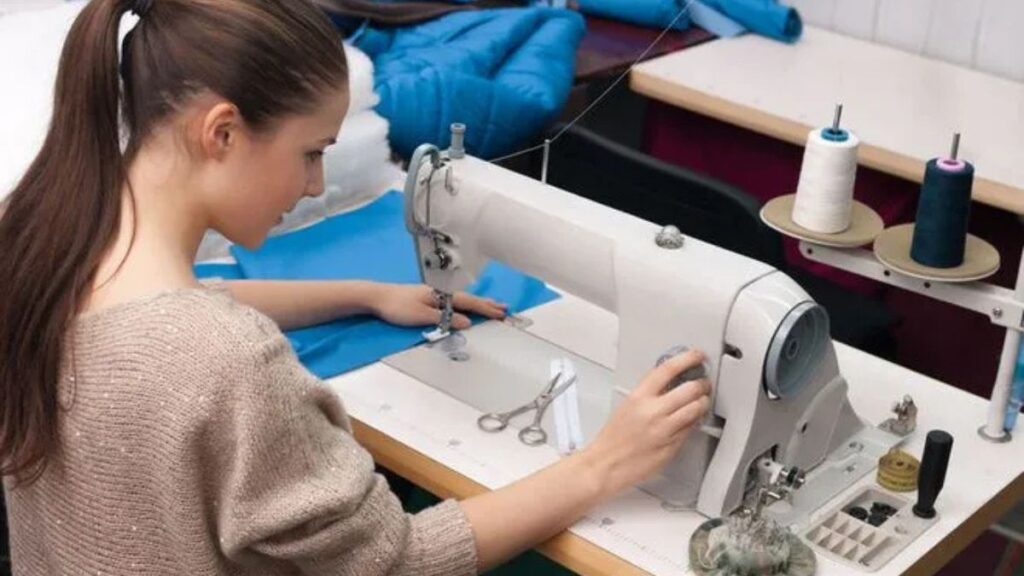In the world of sewing, fashion design, and textile production, “Nahttypen” refers to the various types of seams used to join pieces of fabric. Seam selection is not just a technical decision—it influences durability, appearance, flexibility, and even comfort in garments and textiles.
Whether you’re a professional fashion designer, an industrial textile engineer, or a hobby sewist, understanding the right Nahttyp (seam type) for the job is crucial for quality craftsmanship.
🧵 Why Are Seam Types (Nahttypen) So Important?
Seams are the structural backbone of any garment or textile product. Different seam types serve different purposes:
- 🧍♂️ Fit and shape of clothing
- 💪 Strength and durability for high-stress areas
- 👗 Aesthetic appeal and style enhancement
- 🔄 Flexibility and movement for activewear
- 🧼 Washability and maintenance
Choosing the right seam type ensures the finished product not only looks great but also lasts longer and feels better to wear.
📚 Overview of Common Nahttypen (Types of Seams)
Let’s explore the most popular seam types used in fashion, home textiles, and industrial applications:
1. Steppnaht (Plain Seam)
The most basic and widely used seam. Two fabrics are placed right sides together and sewn along the edge.
- ✅ Easy to sew
- ✅ Great for woven fabrics
- ❌ Not ideal for stretchy materials
2. Kappnaht (Flat-Felled Seam)
A durable seam used in denim and workwear. The raw edges are enclosed for strength and neatness.
- ✅ Strong and clean
- ✅ Perfect for jeans, outerwear
- ❌ Time-consuming to sew
3. Französische Naht (French Seam)
A double-stitched seam that hides raw edges inside.
- ✅ Elegant and neat
- ✅ Ideal for lightweight fabrics
- ❌ Not suitable for heavy fabrics
4. Doppelnaht (Double Seam)
Two parallel rows of stitching for decorative or reinforced seams.
- ✅ Strong and stylish
- ✅ Great for sportswear
- ❌ Can be bulky on fine fabrics
5. Overlocknaht (Overlock Seam)
Created using a serger machine, this seam finishes the edge and sews in one step.
- ✅ Fast and clean
- ✅ Ideal for stretch and knit fabrics
- ❌ Requires special equipment
6. Zickzacknaht (Zigzag Seam)
Used to prevent fraying and stretch slightly with movement.
- ✅ Versatile
- ✅ Great for edge finishing
- ❌ Not as polished in appearance
7. Kettnaht (Chain Stitch Seam)
A looped stitch commonly used in stretch garments and waistbands.
- ✅ Flexible
- ✅ Durable under stress
- ❌ Can unravel if not locked
🧠 Choosing the Right Seam for Your Project
Each seam type is suited for specific applications. Here’s a quick guide to help you decide:
| Fabric Type | Best Nahttyp | Application Example |
| Cotton | Steppnaht, Kappnaht | Shirts, blouses |
| Denim | Kappnaht, Doppelnaht | Jeans, jackets |
| Chiffon/Silk | Französische Naht | Evening gowns, lingerie |
| Jersey/Stretch | Overlocknaht, Zickzack | T-shirts, leggings |
| Canvas | Doppelnaht, Kappnaht | Bags, workwear |
🧰 Tools and Machines for Nahttypen
Different seam types often require different tools:
- ✂️ Scissors or rotary cutter – for precise cutting
- 🧵 Sewing machine – basic or computerized
- 🧷 Overlocker/Serger – for overlock and rolled hems
- 📏 Seam gauge – ensures even spacing
- 🪡 Specialized presser feet – for French seams, flat-felled seams, etc.
Using the right machine settings and accessories ensures each seam type performs optimally.
🧵 Industrial vs. Home Sewing: Seam Standards Compared
In industrial sewing, efficiency and durability are critical. Commonly used seams include:
- Safety seam (Sicherheitsnaht)
- Lapped seams (Überlappte Nähte)
- Welt seams (Paspelnaht)
In home sewing, focus is often on aesthetics and versatility, favoring:
- French seams
- Zigzag and overlock
- Decorative topstitching seams
Understanding both helps sewists choose the right construction for scale, use, and function.
🧵 Sustainability and Seam Types
Eco-conscious sewing and fashion brands are now rethinking seam construction to reduce:
- 🧵 Waste (through minimal or hidden seams)
- 🪡 Chemical treatments (by selecting soft-finish seams)
- 🔁 Recyclability (e.g., seams that are easy to unpick or alter)
Minimalist and modular seams are being embraced in sustainable fashion design to reduce textile waste and increase garment life.
FAQs About Nahttypen
1. What is the most common seam type in clothing?
The plain seam (Steppnaht) is the most commonly used seam for general garment construction.
2. Can I use overlock seams without a serger?
You can mimic overlock seams using a zigzag stitch or overlock foot on a standard sewing machine, though it may not be as neat.
3. Which seam is best for stretchy fabrics?
Overlock and zigzag seams are best suited for stretch materials like jersey and spandex.
4. What’s the strongest seam type?
Flat-felled seams (Kappnaht) are extremely strong and are commonly used in high-stress garments like jeans.
5. Are French seams only for delicate fabrics?
They work best with lightweight and sheer fabrics, but can be used creatively in other contexts for a polished finish.
6. What is a safety seam?
A Sicherheitsnaht (safety seam) combines an overlock and straight stitch for maximum strength, often used in industrial sewing.
7. How do I finish seams without a serger?
You can use pinked edges, zigzag stitch, or bias binding to finish seams on a standard sewing machine.
8. Is it okay to mix seam types in one garment?
Yes! Many garments use a combination of seam types depending on the stress points, visibility, and design needs.
✅ Conclusion: Mastering Nahttypen for Better Sewing and Design
Understanding Nahttypen is essential for anyone serious about sewing, fashion design, or textile production. Each seam type serves a purpose — whether it’s strength, flexibility, appearance, or speed. By mastering the most important seam types, you elevate not just the durability of your work, but also its professionalism and visual impact. Whether you’re crafting a couture dress, a gym tee, or industrial uniforms — the right seam can make all the difference.

